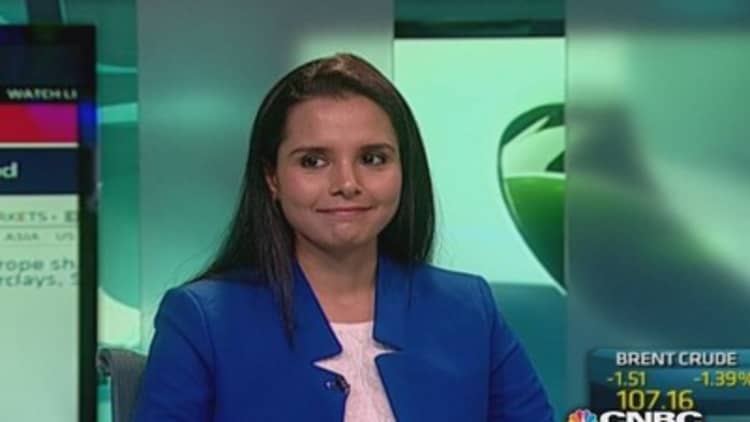After two years of stagnation, things are finally looking up for Asia's third largest economy.
India, referred to by some as Asia's sleeping giant, has seen gross domestic product (GDP) growth rates stuck below 5 percent for 8 straight quarters, damping hopes of an economic revival. However, a pickup in economic activity over the past three months is restoring optimism around the country's outlook.
In a report released this week, Morgan Stanley outlined five key indicators that show growth is bottoming out:
1. Industrial production was better than expected for a second straight month in May, growing at its fastest pace since October 2012, helped by a combination of strong external demand and pick-up in domestic consumer demand.
2. Exports saw double-digit growth for a second consecutive month in June, as a recovery in global demand gained traction.
3. Non-oil, non-gold imports, an indicator of domestic demand, recorded positive growth for a second straight month in June.
4. Medium and heavy commercial vehicles sales growth, a barometer of economic activity and business confidence, turned positive for first time in 27 months in June.
5. Petroleum products consumption growth, another indicator of domestic demand, stood at a 17- month high in June.
"Indicators of domestic demand such as industrial production growth, auto sales, non-oil non-gold import segment have shown improvement in growth over the last two months. However, key support is likely to come from export recovery," said Morgan Stanley economists, Chetan Ahya and Upsana Chachra.
The recent improvement in India's economic performance coincides with the Prime Minister Narendra Modi coming into power in late May. Modi's promise of a better economic climate has helped to restore confidence among corporate leaders.
Read MoreAbenomics and Modinomics: New BFFs?
In the annual American Express/CFO Research Global Business and Spending Monitor published earlier this month, 70 percent of Indian CFOs said they were confident that political changes would positively affect their company's ability to grow.
The government has vowed to raise the pace of economic growth to 7-8 percent in three to four years from less than 5 percent now. The economy is expected to grow 5.5 percent in the current fiscal year ending March 2015, according to the World Bank, up from 4.7 percent in the previous year.
Read MoreModi budgets for Indian growth, to curb deficit
Morgan Stanley's optimism is shared by many other banks. In a recent report, Nomura said it believes the economy is at an "inflection point" and expects GDP growth to rise to rise to 5 percent in the current fiscal year and further to 6.5 percent next year.

"We expect India's economic data to surprise positively in the coming months," said Sonal Varma, chief India economist at Nomura.
Read MoreIs Carrefour's India exit a setback for Modi?
Taimur Baig, director of Asia economics at Deustche Bank agreed there were clear signs of a bottom in India, but noted that a major turnaround in the economy would take some time.
"Industrial production has begun to pick up, and there is clearly a lot more enthusiasm about the investment outlook. Foreign institutional flows have surged leading into the elections and have continued. While a turnaround in the economy will take time given the extent of macro headwinds and structural bottlenecks, there are clear signs of a bottom in India," he said.


